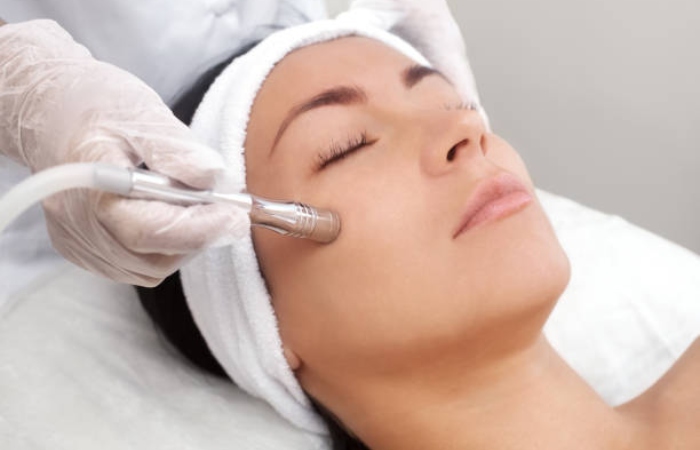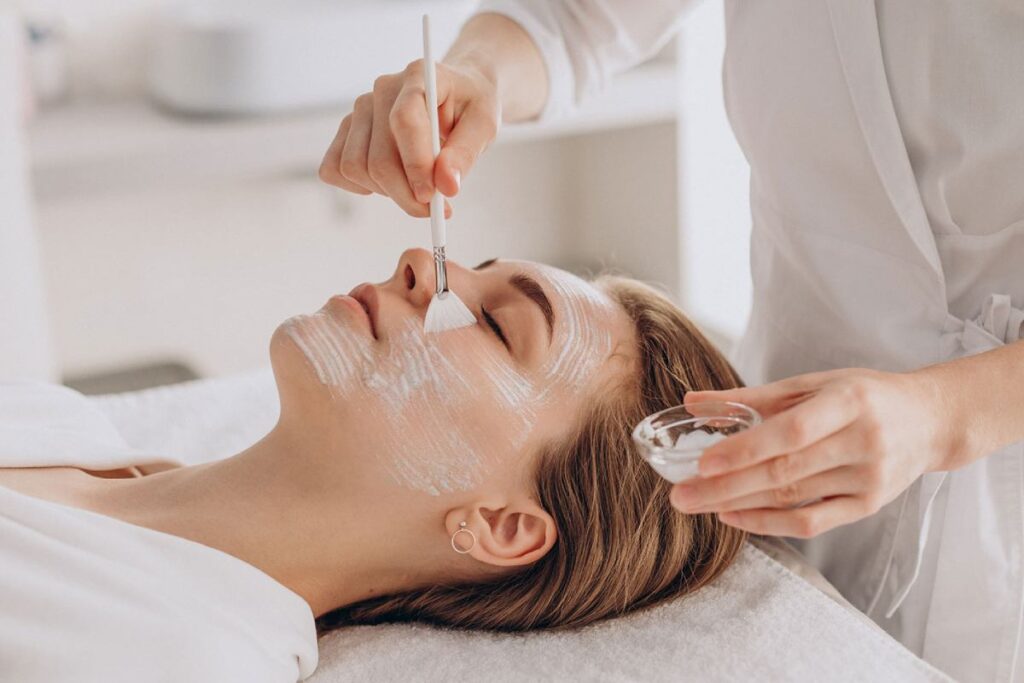Chemical peels are undoubtedly one of the most popular cosmetic procedures that can be done either at home or in the office. They range from super-gentle options that instantly add a radiant complexion (suitable even for sensitive skin) to more aggressive options that target deeper issues like wrinkles, texture, and hyperpigmentation.
The term sounds pretty scary, and we’re sure you have many questions about what you need to know before getting a chemical. Luckily, we asked the skincare experts all your questions, including cost, benefits, types, and recovery time, so you can decide if this cosmetic procedure is correct for you.
What is Chemical Peeling?

A chemical peels is a cosmetic process in which a liquid chemical solution is applied to the skin to address various skin concerns, explains Joanna Ellis, master esthetician at NM Aesthetics and Wellness in Arlington, Virginia.
The solution typically consists of exfoliating ingredients, including alpha hydroxy acids (AHAs), such as glycolic or lactic acid, and beta hydroxy panes (BHAs), such as salicylic acid. Gentler ingredients like enzymes are sometimes used, while more aggressive chemical may include trichloroacetic acid (TCA) or phenolic chemical peels.
This procedure gets its name because some of it can cause skin peeling. “Some peels cause little to no peeling, while others can cause the skin to peel for seven to ten days,” says Ellis.
Chemical Peeling Benefits Chemical Peels
Chemical peel resurface the skin, which can help in various ways. “They greatly help with skin issues such as acne, melasma, sun damage, uneven texture, scarring, uneven skin tone, and fine lines,” notes Ellis. The deeper the peel, the more skin coatings are shed and the more dramatic the results.
Gentle peels mainly dissolve dead skin cells that remain on the surface rather than penetrating deeply. This still provides an instant brightening effect and can help your products apply and absorb more effectively.
The difference between shell and office Chemical Peels
The main difference between an at-home and a professional peel is the exfoliation’s level (or depth). While you can enjoy gentle peels in a professional setting and with over-the-counter products, aggressive peels formulated
A professional should only use TCA or phenol (or high concentrations of other acids) Chemical Peels.
“Certain acid percentages are unsafe for home use,” Ellis explains. “When getting a professional peel, your
healthcare provider should know which is most suitable for your skin to avoid adverse reactions or permanent damage Chemical Peels.”
How to choose the best peel for your skin problem Chemical Peels

One of the most significant compensations of chemical peels is that they are available in various concentrations and formulas. “Many peels are now suitable for all skin types and tones, providing overall glow and leaving you
with a gorgeous glow,” says Ellis.
If you want to give your skin a quick glow, then a gentle homemade product is the way to go. For example, the Eminence Organics Yam and Pumpkin Enzyme Peel ($49, Dermstore) gently exfoliates skin with lactic acid and
pumpkin enzymes. It has a nice little tint but doesn’t leave your face red or flaky. The same goes for Dr. Seuss’ two-step peeling pads Chemical Peels. Dennis Gross Skincare Alpha Beta edition Universal Daily Peel Pads ($92, Sephora) are
easy to use and gentle enough for daily use Chemical Peels.
On the other hand, if you’re looking to address issues like fine lines and wrinkles, melasma, and rough texture,
then a strong in-office peel may be your best bet Chemical Peels.


